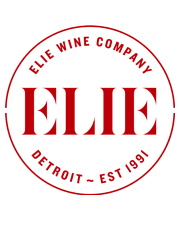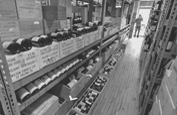Saturday Sips: Domaine Michel Gay’s Côte-de-Beaune Reds & Beaune’s Lone Red Grand Cru, Corton (6-Bottle Wine-Pack $390, All Included)
We are pleased to announce the return of Saturday Sips! We will be applying in-store tasting protocols to ensure everyone stays safe and will limit the number of people tasting at any given time and adhere to proper social-distancing using assigned tasting spots marked on the floor. Our tasting glasses will be one time use for the day but feel free to bring your own glass if you wish.
Domaine Michel Gay’s Côte-de-Beaune reds and Beaune’s only red Grand Cru, Corton. 6-Bottle Wine-Pack $390, All Included. The all-red 6-bottle selection includes one bottle of each of Corton-Renardes (Grand Cru), Savigny-lès-Beaune Vergelesses (Premier Cru), Aloxe-Corton, and three bottles of Bourgogne “Côte d’Or Rouge.
Domaine Michel Gay et Fils
 Great wines may be made in the vineyard, but the finesse is often created on the sorting table. When Sébastien Gay took over Domaine Michel Gay after his father’s 2001 retirement, among the improvements he initiated was a shift to organic farming, doing multiple “green harvests,” limiting yields by hand-pruning the vines and adding a pair of sorting tables where dozens of workers determine the quality levels of individual grapes. According to Sébastien, “Our wines show more balance now because modern techniques allow us to better control the different steps in the winemaking process.”
Great wines may be made in the vineyard, but the finesse is often created on the sorting table. When Sébastien Gay took over Domaine Michel Gay after his father’s 2001 retirement, among the improvements he initiated was a shift to organic farming, doing multiple “green harvests,” limiting yields by hand-pruning the vines and adding a pair of sorting tables where dozens of workers determine the quality levels of individual grapes. According to Sébastien, “Our wines show more balance now because modern techniques allow us to better control the different steps in the winemaking process.”
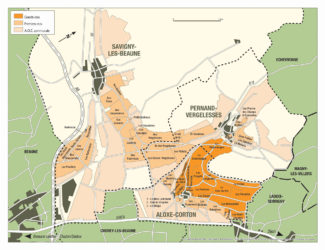 At just over 37 acres, the estate is relatively small, but it incorporates vineyard plots in communes with storied names and spreads across a kaleidoscope of terroirs, including Chorey‐lès‐Beaune, Aloxe‐Corton, Savigny‐lès‐Beaune Premier Crus Serpentières and Vergelesses, three premier crus in Beaune, Toussaints, Aux Coucherias, and Les Grèves, as well as a small parcel on the Corton hill in the Renardes vineyard. Vines are between forty and sixty years old, and receive the same individualized attention as the grapes do at harvest. A fifth-generation winemaker, Sébastien who recently was joined by his son Laurent, has embraced modernity while revering tradition and the result is a portfolio of wines that see improvement with nearly every vintage.
At just over 37 acres, the estate is relatively small, but it incorporates vineyard plots in communes with storied names and spreads across a kaleidoscope of terroirs, including Chorey‐lès‐Beaune, Aloxe‐Corton, Savigny‐lès‐Beaune Premier Crus Serpentières and Vergelesses, three premier crus in Beaune, Toussaints, Aux Coucherias, and Les Grèves, as well as a small parcel on the Corton hill in the Renardes vineyard. Vines are between forty and sixty years old, and receive the same individualized attention as the grapes do at harvest. A fifth-generation winemaker, Sébastien who recently was joined by his son Laurent, has embraced modernity while revering tradition and the result is a portfolio of wines that see improvement with nearly every vintage.
Corton – Grand Cru
Age is a treasured commodity in wine, but the limestone of Corton, lying between Ladoix and Meursault is younger than anywhere else along the Côte. The largest Grand Cru in Burgundy, Corton forms a natural amphitheater on the northern tip of the Côte de Beaune. Other than the dense woodlands that caps the summit, the renowned hill of Corton is almost entirely planted to grapes, although the Grand Cru designation covers only the southern half. On the western slope, Chardonnay benefits from surface layers of limestone, while the eastern side—being exposed to morning sunlight and richer in marlstone—is perfectly suited to Pinot Noir.
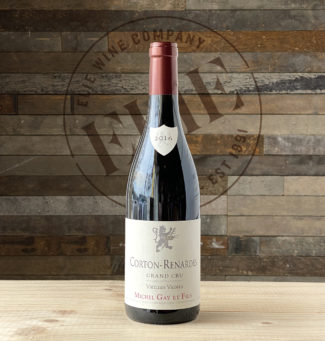 Corton-Renardes Grand Cru “Vieilles Vignes” 2016, $145
Corton-Renardes Grand Cru “Vieilles Vignes” 2016, $145
Les Renardes is a well-known lieu-dit of the Corton Grand Cru appellation; it sits on an eastern slope of the Montagne de Corton and produces exceptional Pinot Noir. The soils in this corner of Aloxe-Corton are rich in iron oolite, giving the wines a characteristically feral richness, which is both encouraged and embraced by the winemakers. This supple 2016 shows juicy red plum and anise with delicate overtones of smoke and earth resplendent with the leathery layers for which the vineyard is famous.
Savigny-lès-Beaune
The territory between Corton and Beaune is heavy with the remains of French aristocracy; here, land and vineyard owners have included dukes, Cistercians and even Popes. Savigny-lès-Beaune wines are said to reflect that heritage, with a special emphasis on elegance. The whites may appear deep gold with emerald highlights, while the reds—representing more than 85% of the total production—are in equal measure powerful and robust. In terms of terroir, the lower slopes are rich with alluvia from the Rhoin, and the highest plots, at elevations even greater than those of the hill of Corton, are rooted in gravelly soils with a scattering of ironstone.
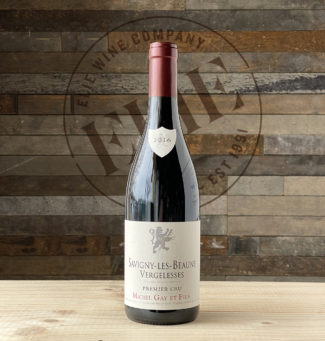
Savigny-lès-Beaune Premier Cru – Vergelesses 2016, $59
Of Savigny-lès-Beaune’s premier cru vineyards, Les Vergelesses is known for red wines of depth and distinction. It sits on the south-facing side of River Le Rhoin at a point where the valley opens out onto the plains between Beaune and Corton. The 2016 vintage produced low yields of exceptional quality, showing focused wild strawberry and peppery spice wrapped in supple tannins.
Aloxe-Corton
The appellation of Aloxe-Corton stands guard near vinous gates of the Grand Crus of Corton and Corton-Charlemagne, enjoying (if not the prestige) many similar growing conditions, producing almost exclusively red wines known for both a depth of color and an intensity of flavor. With vines facing east, the terroir is soil driven, with flint and limestone rich in potassium and phosphoric acid lending supple firmness to the wines, especially those from the appellation’s southern end.
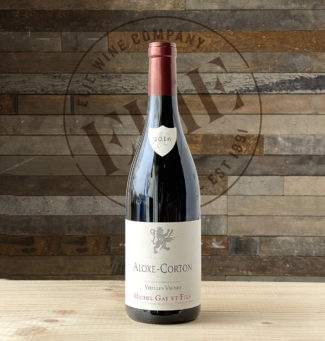
Aloxe-Corton “Vieilles Vignes” 2016 $59
Drawing from four unique vineyards within Aloxe-Corton—Les Crapousuets, Les Caillettes, Boulmeau and Les Boutières—Michel Gay’s “Vieilles Vignes” refers to vines with an average age of more than 60 years. The complex characteristics of old vine wine are present with deep garnet hues and a toasty reduction of cassis, licorice, currants and silken tannins.
Bourgogne (Regional)
Authorized in 1937, the designation AOC “Bourgogne” encompasses all 385 villages in the Burgundy region. To use the appellation on a label, the grapes must come from one, or all, of the three departments of Yonne, Côte-d’Or and Saône-et-Loire. Although often considered an ‘entry-level’ Burgundy, few of the vineyards are situated near illustrious vineyards and quality may reflect that. It’s fair to say that whereas some wines bearing the “Bourgogne” deignation may be acidic or harsh, some of the greatest values may also be found here.
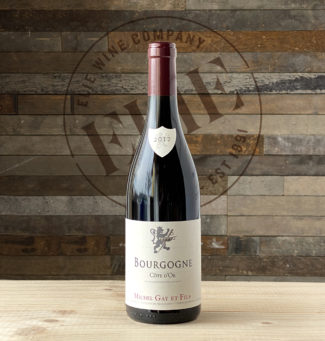
Bourgogne Côte d’Or Rouge 2017 $35
The AOC “Bourgogne Côte d’Or” encompasses 40 villages between Dijon and Maranges; as a restriction within the general Bourgogne AOC, it is fairly new, intended to highlight the unique potential of the Côte d’Or to produce wines superior to either Yonne or Saône-et-Loire. Michel Gay’s 2017 displays a solid, fleshy Burgundian profile, with ripe cherry, cinnamon, forest floor and a soft tannic backbone.
- - -
Posted on 2021.04.08 in France, Burgundy | Read more...
The Champagne Society April 2021 Selection: Champagne Penet-Chardonnet
 Champagne Penet-Chardonnet, Lieu-Dit “Les Epinettes”, Verzy – Grand Cru, Millesimé 2009, Extra Brut Price for The Champagne Society members only: $99 (Regular $150)
Champagne Penet-Chardonnet, Lieu-Dit “Les Epinettes”, Verzy – Grand Cru, Millesimé 2009, Extra Brut Price for The Champagne Society members only: $99 (Regular $150)
At its essence, ‘cru’ refers to real estate; its evolution as an often-appearing designation onFrench wine labels is meant to be a nod to the ‘sense of place’ that is fundamental to the concept of ‘terroir.’ But in France, not all crus are created equally. In Burgundy, for example, a cru signifies a vineyard; in Bordeaux, it refers to a chateau or an estate. In Champagne, a cru encompasses an entire village and is based on the classification system adopted in 1920. The Échelle des Crus ranked the more than 300 wine-producing villages in Champagne according to a quality potential based on overall growing conditions and was made manifest primarily by the prices each commune could charge for a kilogram of grapes. In the original classification, 12 villages were rated as Grand Crus (expanded to 17 in 1985) and were entitled to receive 100% of the pricing set by the Champagne appellation for their harvest; 44 were Premier Crus and commanded 90 to 99% of the pricing, and the remaining named villages could charge 80-89%, with none rated lower than that. A bottle may only use the term ‘Grand Cru’ if 100% of the grapes used are from Grand Cru villages, while a bottle labelled ‘Premier Cru’ must be 100% Premier Cru or a mix of both Grand and Premier.
Since 2000, due to potential conflicts with EU law, the Échelle has been used merely as a guide rather than a mandate, but it is still a reasonable assessment of the historic qualities of villages and vineyards and still denotes some of the best areas of Champagne.
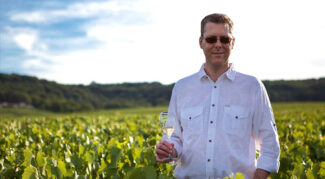 Near the center of the picturesque Grand Cru village of Verzy, overlooking the vineyards of Montagne de Reims, sits Maison Champagne Penet-Chardonnet. Although the estate was only founded in 1967, the families Penet and Chardonnet have viticultural roots in Champagne dating back to the 17th century. The current owner is Alexandre Penet; he took over the Maison in 2007 after having pursued an MBA from the University of Chicago Business School before hearing the siren song of Champagne calling him back to the family estate. There, along with his wife Martine, Penet has created a range of distinctive, top quality wines produced to exacting standards. A firm believer that Champagne should not be viewed strictly as an aperitif, but as an integral part of an entire meal, Penet introduced to Champagne Penet-Chardonnet low dosages and a style that foregoes a secondary malolactic fermentation to allow the wine to express the minerality that characterizes the region. The excess acidity that malolactic would otherwise temper is dealt with by aging. Penet says, “Long ageing on the lees matures the wine and gives it complexity and balance. These Champagnes spend a long time in the old cellar under the house; three years is always the minimum, but more often it is 5-7 years and sometimes even 10-13 years. The longer the ageing on the lees, the more complex the aromas, and that is why we don’t need to add a lot of sugar. The acidity feels milder with the ageing.”
Near the center of the picturesque Grand Cru village of Verzy, overlooking the vineyards of Montagne de Reims, sits Maison Champagne Penet-Chardonnet. Although the estate was only founded in 1967, the families Penet and Chardonnet have viticultural roots in Champagne dating back to the 17th century. The current owner is Alexandre Penet; he took over the Maison in 2007 after having pursued an MBA from the University of Chicago Business School before hearing the siren song of Champagne calling him back to the family estate. There, along with his wife Martine, Penet has created a range of distinctive, top quality wines produced to exacting standards. A firm believer that Champagne should not be viewed strictly as an aperitif, but as an integral part of an entire meal, Penet introduced to Champagne Penet-Chardonnet low dosages and a style that foregoes a secondary malolactic fermentation to allow the wine to express the minerality that characterizes the region. The excess acidity that malolactic would otherwise temper is dealt with by aging. Penet says, “Long ageing on the lees matures the wine and gives it complexity and balance. These Champagnes spend a long time in the old cellar under the house; three years is always the minimum, but more often it is 5-7 years and sometimes even 10-13 years. The longer the ageing on the lees, the more complex the aromas, and that is why we don’t need to add a lot of sugar. The acidity feels milder with the ageing.”
 Highlighting a specific cru is also somewhat rare in Champagne, where cuvées are generally blends of plots from several villages. With “Les Epinettes”, Penet draws exclusively from a single one of the family’s historical lieu-dits in Grand Cru Verzy. Oriented toward the northwest on a gentle slope of chalky limestone, the vineyard is planted exclusively to Pinot Noir with vines over forty years old. Made from 100% Pinot Noir, full-bodied, pure and firm, the wine expresses generous aromas of peach, toasted almond and baked apple over layers of citrus blossom and marzipan and finishes with clean, lively and balanced acidity. With around 3,000 bottles produced, each individually numbered and containing both the harvest and disgorgement date May 16, 2018 and a dosage of 5.6 grams per liter of sugar, Penet considers “Les Epinettes” to be an ultimate achievement of the Penet family’s heritage.
Highlighting a specific cru is also somewhat rare in Champagne, where cuvées are generally blends of plots from several villages. With “Les Epinettes”, Penet draws exclusively from a single one of the family’s historical lieu-dits in Grand Cru Verzy. Oriented toward the northwest on a gentle slope of chalky limestone, the vineyard is planted exclusively to Pinot Noir with vines over forty years old. Made from 100% Pinot Noir, full-bodied, pure and firm, the wine expresses generous aromas of peach, toasted almond and baked apple over layers of citrus blossom and marzipan and finishes with clean, lively and balanced acidity. With around 3,000 bottles produced, each individually numbered and containing both the harvest and disgorgement date May 16, 2018 and a dosage of 5.6 grams per liter of sugar, Penet considers “Les Epinettes” to be an ultimate achievement of the Penet family’s heritage.
- - -
Posted on 2021.04.03 in France, The Champagne Society, Champagne | Read more...
Languedoc-Roussillon’s First Cru: A Tale of Two Fitou(s) (6-Bottle Wine-Pack $199, or 12-Bottle $369, All Included)
Nestling around a village called Fitou on the Mediterranean coast, Fitou is the oldest recognized appellation in the Languedoc-Roussillon and produces signature wines from a primary blend of Carignan and Grenache with each is equal to or greater than 20%. Complimentary grapes like Mourvèdre and Syrah may account for no less than 10% and up to 20% of the final wine, and the deciding factor is often the elevation of the vineyard. Like the nearby appellation of Corbières, the wines of Fitou are rich and rustic and famous for their herbal undertones and—especially in vineyards near the coast—a briny quality reminiscent of the sea. Recent innovations have raised the quality bar in the appellation, and today producers are making lighter wines of elegance and distinction.
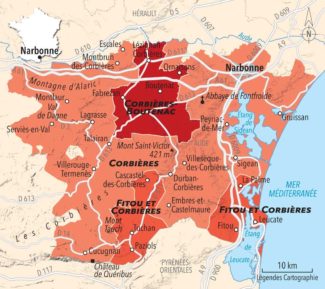
Geographically and stylistically, Fitou is subdivided into two distinct zones: Fitou Montagneux, which snakes inland toward the schist-rich mountains and hosts vineyards at elevations between 300 and 1,300 feet and Fitou Maritime, closer to the sea and spreading across the flatter, limestone plateaus of the Mediterranean coast.
Both zones produce unique wines that represent their distinct terroirs and the winemaking philosophies of the producers. We are pleased to offer a selection of exceptional Fitou wines from top estates in each of these zones. 6-Bottle pack for $199 or 12-Bottle pack for $369, All Included
Fitou Montagneux
Domaine Bertrand-Bergé – (Jérôme & Sabine Bertrand)
Nowhere in Fitou is the depth of family history more celebrated than that at the estate of Domaine Bertrand-Bergé, where six generations have maintained the property for well over a century. Located between Languedoc and Roussillon, Domaine Bertrand-Bergé is established in Paziols, a charming small town in the Aude region. Current winemaker is Jérôme Bertrand; his great-grandfather Jean Sirven first began scoring points for the domaine’s wines at the 1900 World’s Fair in Paris. The modern era for Bertrand-Bergé started in 1993, when Jérôme and his wife Sabine took the winemaking excellence back into their own hands after a few decades of supplying grapes to the local co-operative. The wide range of soils and microclimates found in the region contribute much to the stellar quality of the wines, but of course it is the tireless effort of Jérôme Bertrand that translates the unique charm of this location into world-class wines. Jancis Robinson, the English wine writer, cites Bertrand-Bergé as an example of the “purity” possible in wines from Fitou.

“Cuvée Jean Sirven”, Fitou 2013 ($55) – 290 cases produced – (Carignan 45%, Syrah 45%, Grenache 10%): A sensory-surrounding old-vine masterpiece with bright blackberry jam and herbal garrigue; black cherries, figs, licorice and velvety tannins with a persistent finish. Broad on the palate and extremely aromatic, “Cuvée Jean Sirven” is capable of developing further over the next decade.
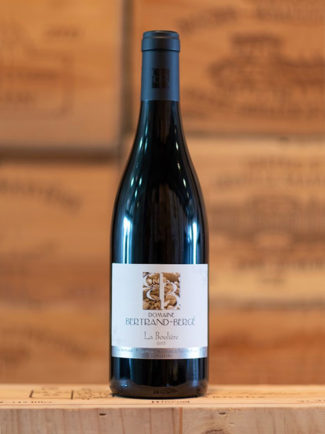 “La Boulière”, Fitou 2015 ($32.00) – 333 cases produced – (Mourvèdre 50%, Carignan 25%, Grenache 25%) Elegant old-vine cuvée showing dried cherries, figs, light tobacco; full-bodied, ultra-polished, layered and balanced package; much livelier than many Mourvèdre-based wines from nearby Bandol.
“La Boulière”, Fitou 2015 ($32.00) – 333 cases produced – (Mourvèdre 50%, Carignan 25%, Grenache 25%) Elegant old-vine cuvée showing dried cherries, figs, light tobacco; full-bodied, ultra-polished, layered and balanced package; much livelier than many Mourvèdre-based wines from nearby Bandol.
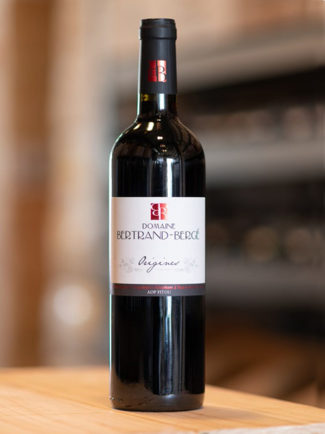
“Origines”, Fitou 2016 ($21.00) – 4,166 cases produced – (Carignan 60%, Grenache 40%) Showcasing the region’s signature blend, the late-harvesting Carignan offers a slight, characteristic bitterness with cranberry, red-cherry and raspberry acidity that vibrates to the finish.
Fitou Maritime
Mas de Caprices – (Mireille & Pierre Mann)
Mireille and Pierre Mann were born to tradition. As the children of Alsatian winemakers, they operated a successful restaurant in Colmar, Alsace, but in 2003, gave it up to return to their vinicultural roots. They established Mas de Caprices near the seaside resort of Leucate in the Corbières Maritimes. There, the combined forces of water and wind wreak both havoc and harmony throughout the vineyards, and the flavors of brine and garrigue—the coastal herbs that include both sage and lavender—show up in the wines.
Certified organic in 2009, their guiding philosophy is meticulous work in the vineyard while respecting nature with the goal of producing wines that are both expressions of their unique environment and utterly delectable.
 “Retour aux Sources”, Fitou 2016 ($30) – 583 cases produced – (Carignan 45%, Lladoner Pelut 30%, Mourvèdre 25%): Carignan we know; Lladoner Pelut may be less familiar, even to wine fanatics. Believed to be a mutation of Grenache Noir, ‘pelut’ is French for ‘furry’ and makes a reference to the vine’s downy leaves, likely evolved to retain moisture and regulate transpiration. Roughly 70% of the wine is matured in concrete vats and the rest in old barrels, offering jammy fruit, excellent structure, and heady aromas of ripe blackberries and herbs, making a wine ideal for hearty vegetable dishes like ratatouille and olive tapenade.
“Retour aux Sources”, Fitou 2016 ($30) – 583 cases produced – (Carignan 45%, Lladoner Pelut 30%, Mourvèdre 25%): Carignan we know; Lladoner Pelut may be less familiar, even to wine fanatics. Believed to be a mutation of Grenache Noir, ‘pelut’ is French for ‘furry’ and makes a reference to the vine’s downy leaves, likely evolved to retain moisture and regulate transpiration. Roughly 70% of the wine is matured in concrete vats and the rest in old barrels, offering jammy fruit, excellent structure, and heady aromas of ripe blackberries and herbs, making a wine ideal for hearty vegetable dishes like ratatouille and olive tapenade.
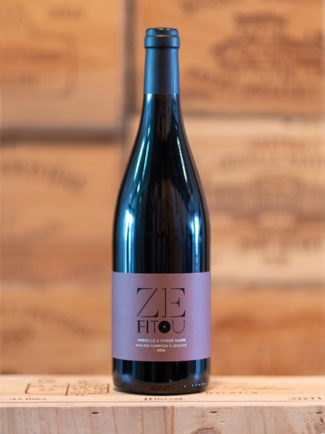
“Ze Fitou”, Fitou 2016 ($24.00) – 925 cases produced – (Mourvèdre 48%, Carignan 40%, Grenache 12%) Fruit, both ripe and fresh, provides the foundation for this crowd-pleasing red. Maturation takes place for nine months, mainly in concrete vats, with around 20% aging in old barrels. Exceptionally floral on the nose, a sip seduces the palate with velvety tannins and silky berry salad. Pop a bottle for pizza, shawarma, or game night with friends.
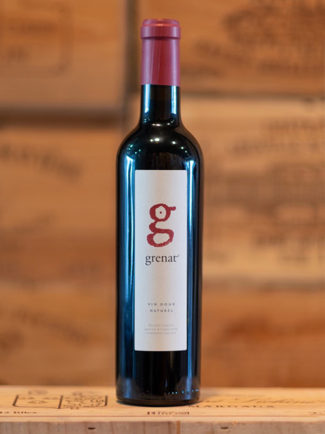 “g Grenat”, Rivesaltes Grenat (Vin Doux Naturel) 2015 ($26), 375 ml – 258 cases produced – (Grenache Noir 100%) A naturally sweet wine produced by harvesting grapes at maximum ripeness, then macerating them without fermentation by the addition of neutral spirits. The wine is fresh and full of jellied fruit with a hint of cocoa, with just enough tannin and acidity to avoid being syrupy. It makes a fine dessert on its own or paired with dried fruit, salted nuts, chocolate and fresh cheeses.
“g Grenat”, Rivesaltes Grenat (Vin Doux Naturel) 2015 ($26), 375 ml – 258 cases produced – (Grenache Noir 100%) A naturally sweet wine produced by harvesting grapes at maximum ripeness, then macerating them without fermentation by the addition of neutral spirits. The wine is fresh and full of jellied fruit with a hint of cocoa, with just enough tannin and acidity to avoid being syrupy. It makes a fine dessert on its own or paired with dried fruit, salted nuts, chocolate and fresh cheeses.
- - -
Posted on 2021.04.01 in France, Languedoc-Roussillon | Read more...
Languedoc’s Exceptional Cru: Terrasses du Larzac with Five Masterly Producers (6-Bottle Wine-Pack $236, All Included)
Sun-baked and sensual, threaded with rivers and capped by the mountains of Corbières, Languedoc-Roussillon relies on over a hundred grape varieties to produce more than a third of all French wine. Historically, this wine was copious, inexpensive and rather forgettable—everyday wine for the tables of ordinary people. Since the mid-twentieth century, however, with the advent of irrigation in the foothills and coastal plains of Southern France coupled with improved techniques, the region now boasts fewer vines that produce wines of increasing quality. A jigsaw of soils and a broad swath of microclimates creates ideal terroir for the warm-weather, full-bodied varietals often associated with the Rhône, while sharp diurnal shifts allow for the preservation of aroma and natural acidity, resulting in wines of extraordinary balance. A further plus is that Languedoc-Roussillon’s hot, dry climate discourages the growth of mildew and fungi, making synthetic pesticides and herbicides less necessary. As such, it has become a proving ground for organic and biodynamic producers.

Among the independent subdivisions of Languedoc-Roussillon, one rising star is rapidly becoming a supernova. Having been formed in 2005 and not officially recognized until 2014, Terrasses du Larzac contains some of the highest elevations in the Languedoc—vineyard plots snake along the Cévennes range and produce wines that are notably distinct from its nearest neighbors, including those from the oldest appellation in France, Roquefort. As in any appellation, the triad of requirements (location, location, location) takes advantage of Larzac’s verticality, horizontal layers of limestone and terraced shingles and unique position between the mountains and the sea, which allow the fruit to ripen slowly and evenly.
We are pleased to offer a selection of exceptional wines from Terrasses du Larzac for an all-inclusive price of $236. It’s an ideal sampler of the complexity and depth that the appellation has to offer. Included in Terrasses du Larzac 6-Bottle Package are one each of the following wines:
 Domaine de Montcalmès
Domaine de Montcalmès
(2015) $43
Led by the dynamic young winemaker Frédéric Pourtalié who cut his winemaking teeth at Laurent Vaillé’s Grange des Pères and while serving under Syrah master Alain Graillot in Crozes-Hermitage, the vines of family-owned Domaine de Montcalmès are spread across sixty diverse acres from the commune of Puéchabon to nearby villages of Aniane and Saint Saturnin. Prior to Pourtalié and his sister Muriel taking the helm at Montcalmès, the domain sold grapes to the local cooperative. Under his direction, the estate has moved to intensive, hands-on viniculture in which the grapes are harvested with very low yields. Certified organic in 2015, the wines of Domaine de Montcalmès reflect the remarkable diversity of the subsoils, ranging from clay and limestone to puddingstones like those of Châteauneuf-du-Pape. The climate, with cool nights and hot, sunny days, pampers the vines and produces a blend of Syrah, Grenache and Mourvèdre that remains bright with acidity and lush with spicy red fruits.
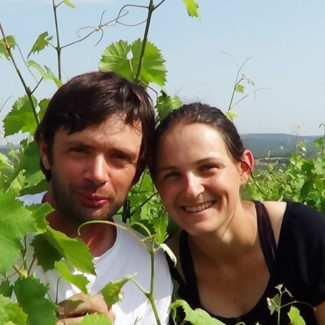 Domaine Saint Sylvestre
Domaine Saint Sylvestre
(2014) $31
Sophie and Vincent Guizard have roots in Terrasses du Larzac dating back generations; their pedigree includes both viticulture and business as Vincent learned to grow grapes from his grandfather and Sophie has a degree in finance. Having launched Domaine Saint Sylvester in 2010 from a minuscule trio of lots totaling less than twenty acres, the wines quickly showcased both talent and passion. Unlike many of proximate vineyards, which have been producing wine since the Roman era, Vincent cleared his own forested land just north of the village of Aniane and planted beneath the watchful eye of a 12th century church. He vinifies using native yeasts and produces complex and aromatic wines in a blend typical of the appellation, 70% Syrah, 20% Grenache, 10% Mourvèdre.
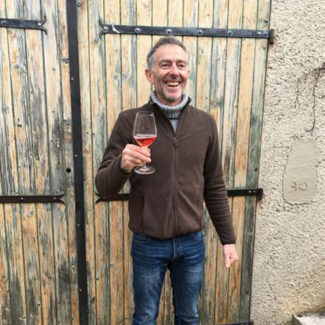 Mas Jullien “Lous Rougeos”
Mas Jullien “Lous Rougeos”
(2017) $47
Among the early pioneers of the modern ‘Larzac style’ is Olivier Jullien: His forty terraced acres, with two distinct soil types—calcaire and argilles—was established in 1985, and his domain, Mas Jullien, is a paradigm of the region. Having witnessed first-hand Languedoc’s tradition of over-cropping to produce bulk wine, he recognized that the economic plight of local independent farmers may have failed to take advantage of the appellations promise. With a degree in enology to shore up his conviction that the area had the potential to produce world-class wine, he showed his iconoclastic hand early by pulling out vineyards and re-planting trees in an effort to restore balance to the local ecosystem. His wines are delightful examples of this balance, imbued with the distinct characteristics permitted by elevation and proximity to the sea. The former lends jazzy bravura to the fruit—cherries, raspberries and red currants—while the latter offers the peculiar herbal-ness that the French call ‘garrigue’.
 Mas Cal Demoura “Terre de Jonquières” (2017) $32
Mas Cal Demoura “Terre de Jonquières” (2017) $32
In Occitan, the native language of nearby Catalunya and Mediterranean France, ‘Cal Demoura’ means ‘we must not leave’—a reference to the number of winemakers in Languedoc who gave up viticulture in the 1970’s and ‘80s. Inspired by the renaissance in quality of those who refused to leave, Vincent Goumard—formerly a strategic consultant in Paris—purchased Mas Cal Demoura in 2000 and embarked on a modest, but explosive winemaking expedition near the village of Jonquières, producing around 4,000 cases annually. “Terre de Jonquières”, a flagship wine composed of 30% Mourvèdre, 25% Syrah, 20% Grenache, 15% Cinsault and 10% Carignan displays saturated black fruits and licorice with integrated tannins and the herbal notes that are representative of the AOC.
Mas Cal Demoura “Les Combariolles” (2017) $45
From the same producers Isabelle and Vincent Goumard, “Les Combariolles” originates from a single parcel located halfway between Jonquiéres and Montpeyroux and is named for the terroir: Combariolles is composed primarily of limestone, resulting in calcium-based soil with ideal water-retention properties for Cal Demoura’s hot-climate vines. The blend (equal parts Syrah and Mourvèdre, with Carignan at 15% and Grenache at 5%) spends 18 months in élevage. This is Cal Demoura’s flagship product, as refined and exotic a wine as the region can offer, with elegant notes of smoky black currant, pomegranate and plum wrapped in silken tannins with remarkable persistence on the palate.
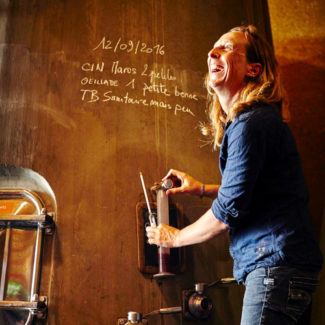 Le Clos du Serres “Les Maros”
Le Clos du Serres “Les Maros”
(2016) $24
In 2006, Béatrice, an architect, and Sébastien Fillon, currently the president of Syndicate AOC Terrasses du Larzac, pursued a lifelong dream: They abandoned the fast-paced lifestyle of urban France to purchase the forty-acre domain of Le Clos du Serres. “The South,” they maintain, “is the only region where there is still land to clear.” They discovered a wonderland of gorges and forests along with a world where community and winemaking are partners. To them, the move meant “being in harmony with nature, sculpting the countryside, caring for and loving the land on which we live.” Intended to express the fresh climate and geological puzzle of the village of Saint Saint-Julien-du-Serre, with 60% Grenache and a balance of equal parts Cinsault and Carignan, this wine is a sultry blend of toasted spice and luscious red fruit with aromatics of violets and clean graphite.
- - -
Posted on 2021.03.25 in France, Languedoc-Roussillon | Read more...
The Case for Bordeaux Top Classified Châteaux’ Third Wines (9-Bottle Wine-Pack $275, All Included)
The great estates of Bordeaux first began to release second label wines in the 17th century, and although they have traditionally varied in price-to-value ratio, it is a logical way for these highly-prized properties to be flexible in their output and to promote their Grand Vin while offering a representational alternative at a lower cost. For consumers, B-List wines from top châteaux often offer a couple of practical advantages that their big-shouldered brothers cannot: Affordability and accessibility in their youth.
Second label wines are not to be confused with the 2nd Growth wines from the historic 1855 Bordeaux Classification like Château Rauzan-Ségla and Château Léoville Las Cases. Second labels are made as separate cuvées within Classified Growths (Crus), often serving as a commercial repository for fruit from declassified lots or slightly Brix-challenged grapes. Throughout Bordeaux, the offerings of second labels attached to grand châteaux is pretty well represented, so what would be the purpose—let alone the incentive—of introducing a third label? Especially since additional labels also require clever new business strategies to separate them from the pack in the eye of the consumer?
That’s a question answered in part by a decade’s worth of physical expansion among several of the Left Bank’s most highly-prized châteaux. New vines have been planted in new terroirs that may take decades to reach maturity. Despite exceptional soils, these very young vines are not yet producing fruit worthy of even a château’s second wine, since the selection process these latter wines has become more rigorous in recent years. Second label wines have undergone an effort to improve quality while third labels offer a showcase for younger wines. As a general rule, the objective for a third label is the same as that one used for the second labels: To produce wines displaying some of the characteristics of their top-tier parents, but at a much more affordable rate. Not only that, but these are intended to be ‘now’ wines, meant for tonight’s dinner table rather than the cellar. It is a way for fans of the great estates to absorb some of the magic without having to attend an auction or spend the kids’ college fund to buy a wine that won’t even be ready to drink until they’ve already graduated college.
Among the third label wines offered in this all-inclusive 9-bottle set are 3 bottles of Légende R from the iconic Château Lafite-Rothschild (Pauillac) and 6 bottles of Moulin d’Issan from Château d’Issan (Margaux) for $275. Both labels represent the two Holy Grails of budget-minded Bordeaux lovers: Value and promise.
 Château Lafite-Rothschild (Pauillac) First Growth
Château Lafite-Rothschild (Pauillac) First Growth
Although there were vineyards at Pauillac’s iconic estate long before Thomas Jefferson stopped by, it was his high regard for the property (coupled with the fact that it was King Louis XV’s favorite wine) that secured Lafite-Rothschild’s spot in the world’s wine stage. Boasting a unique terroir characterized by gravelly hilltops atop clay subsoil, Lafite’s vineyards offer natural drainage and ideal conditions for growing superior Cabernet Sauvignon. As is often the case when the stars align over a vineyard, vintage bottles of Lafite are among the priciest wines in the world, and even the second label, Carruades de Lafite, generally sells for hundreds of dollars. But the third label, Légende R, Pauillac 2014, is available for $42. According to Légende’s winemaker Diane Flamand, “Whether it is our Grand Vin, our Carruades, or Légende, the goal at Lafite is the same: We are after balance, elegance and structure.”
Légende R is created from select plots of younger vines on the Lafite estate, and vinified using both traditional Bordeaux technique and with the characteristic attention to detail. A spicy, white-pepper intensity rises from the glass, filled with layers of fig and red fruit and complemented by chocolate, licorice and roasted espresso beans. The wine is supple and full, rich with sweet plum and opulent cherry. Drinkable upon release, this is a ‘discovery’ wine that combines some of the most notable characteristics of its prestigious parent, but in a decidedly less concentrated package.
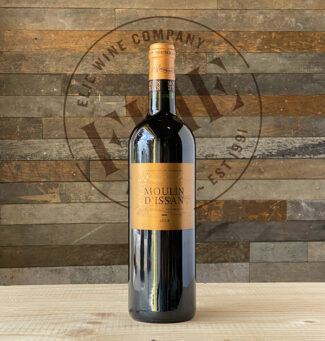 Château d’Issan (Margaux) Third Growth
Château d’Issan (Margaux) Third Growth
Among the appellations of Bordeaux, Margaux is renowned for the elegant structure and velvety-soft flavors of its wine. Château d’Issan in particular benefits from a mild climate, gravelly soil and alluvial hills; perfect for creating wines exemplary of the region.
Geography is destiny, and nowhere is this more obvious than along the historic d’Issan path that passes heads toward the Gironde Estuary; the Margaux vineyards and the Bordeaux Supérieur appellation plots are contiguous, with the vines near the river rising from soil that is mainly clay and limestone, and therefore, well-suited to the Merlot. Like the famous Moulin Rouge dance hall in the 18th arrondissement, Château d’Issan’s third label, Moulin d’Issan, Bordeaux Supérieur 2018 ($22) takes its name from a windmill that still sits on the estate and where the wine is made. Merlot represents 90% of the composition, which makes it unique in Margaux, where wines are predominately Cabernet Sauvignon. Silken and sweet, the wine is gentle on the nose and shows tart cherry and raspberry with an underflow suggesting tobacco leaf and integrated chocolate notes. It’s mouth-filling and briefly luscious, offering the trademark Château d’Issan Margaux framework at a fraction of the cost.
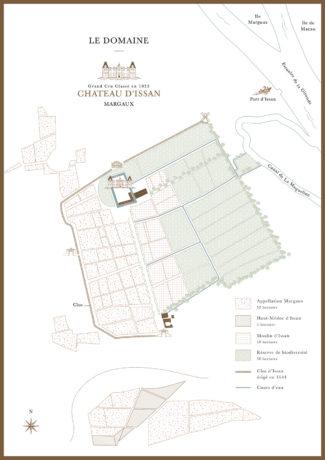
- - -
Posted on 2021.03.18 in France, Bordeaux | Read more...
Featured Wines
- Notebook: A’Boudt Town
- Saturday Sips Wines
- Saturday Sips Review Club
- The Champagne Society
- Wine-Aid Packages
Wine Regions
Grape Varieties
Aglianico, Albarín Blanco, Albillo, Aleatico, Alicante Bouschet, Aligote, Altesse, Arcos, Aubun, Auxerrois, barbera, Beaune, Bonarda, Cabernet Franc, Cabernet Sauvignon, Caino, Caladoc, Carignan, Chablis, Chardonnay, Chasselas, Chenin Blanc, Cinsault, Cortese, Corvina, Corvinone, Cot, Dolcetto, Ferrol, Fiano, folle Blanche, Frappato, Friulano, Fromenteau, Fumin, Gamay, Garganega, Garnacha, Gewurztraminer, Godello, Grenache, Grenache Blanc, Grolleau, Jacquère, Lambrusco, Lladoner Pelut, Loureira, Macabou, Maconnais, Malvasia, Malvasia Nera, manseng, Melon de Bourgogne, Mencía, Merlot, Mondeuse, Montanaccia, Montepulciano, Montònega, Morescola, Morescono, Mourv, Mourvèdre, Muscadelle, Nebbiolo, Nero d'Avola, Niellucciu, Palomino, Parellada, Pecorino, Persan, Petit Verdot, Pinot Auxerrois, Pinot Noir, Pouilly Fuisse, Poulsard, Prieto Picudo, Rondinella, Rose, Roussanne, Sagrantino, Sangiovese, Sauvignon, Sauvignon Blanc, Savignin, Souson, Sparkling, Sylvaner, Syrah, Tannat, Teroldego, Timorasso, Trebbiano, Treixadura, trepat, Trousseau, vaccarèse, Verdicchio, Viognier, ViuraWines & Events by Date
- September 2025
- August 2025
- July 2025
- June 2025
- May 2025
- April 2025
- March 2025
- February 2025
- January 2025
- December 2024
- November 2024
- October 2024
- September 2024
- August 2024
- July 2024
- June 2024
- May 2024
- April 2024
- March 2024
- February 2024
- January 2024
- December 2023
- November 2023
- October 2023
- September 2023
- August 2023
- July 2023
- June 2023
- May 2023
- April 2023
- March 2023
- February 2023
- January 2023
- December 2022
- November 2022
- October 2022
- September 2022
- August 2022
- July 2022
- June 2022
- May 2022
- April 2022
- March 2022
- February 2022
- January 2022
- December 2021
- November 2021
- October 2021
- September 2021
- August 2021
- July 2021
- June 2021
- May 2021
- April 2021
- March 2021
- February 2021
- January 2021
- December 2020
- November 2020
- October 2020
- September 2020
- August 2020
- July 2020
- June 2020
- May 2020
- April 2020
- March 2020
- February 2020
- January 2020
- December 2019
- November 2019
- October 2019
- September 2019
- August 2019
- July 2019
- June 2019
- May 2019
- April 2019
- March 2019
- February 2019
- January 2019
- December 2018
- November 2018
- October 2018
- September 2018
- August 2018
- July 2018
- June 2018
- May 2018
- April 2018
- March 2018
- February 2018
- January 2018
- December 2017
- November 2017
- October 2017
- September 2017
- August 2017
- July 2017
- June 2017
- May 2017
- April 2017
- March 2017
- February 2017
- January 2017
- December 2016
- November 2016
- October 2016
- September 2016
- August 2016
- July 2016
- June 2016
- May 2016
- April 2016
- March 2016
- February 2016
- January 2016
- December 2015
- November 2015
- October 2015
- September 2015
- August 2015
- July 2015
- June 2015
- May 2015
- April 2015
- March 2015
- February 2015
- January 2015
- December 2014
- November 2014
- October 2014
- September 2014
- August 2014
- July 2014
- June 2014
- April 2014
- March 2014
- February 2014
- January 2014
- December 2013
- November 2013
- October 2013
- September 2013
- August 2013
- July 2013
- June 2013
- May 2013
- April 2013
- March 2013
- February 2013
- January 2013
- December 2012
- November 2012
- October 2012

